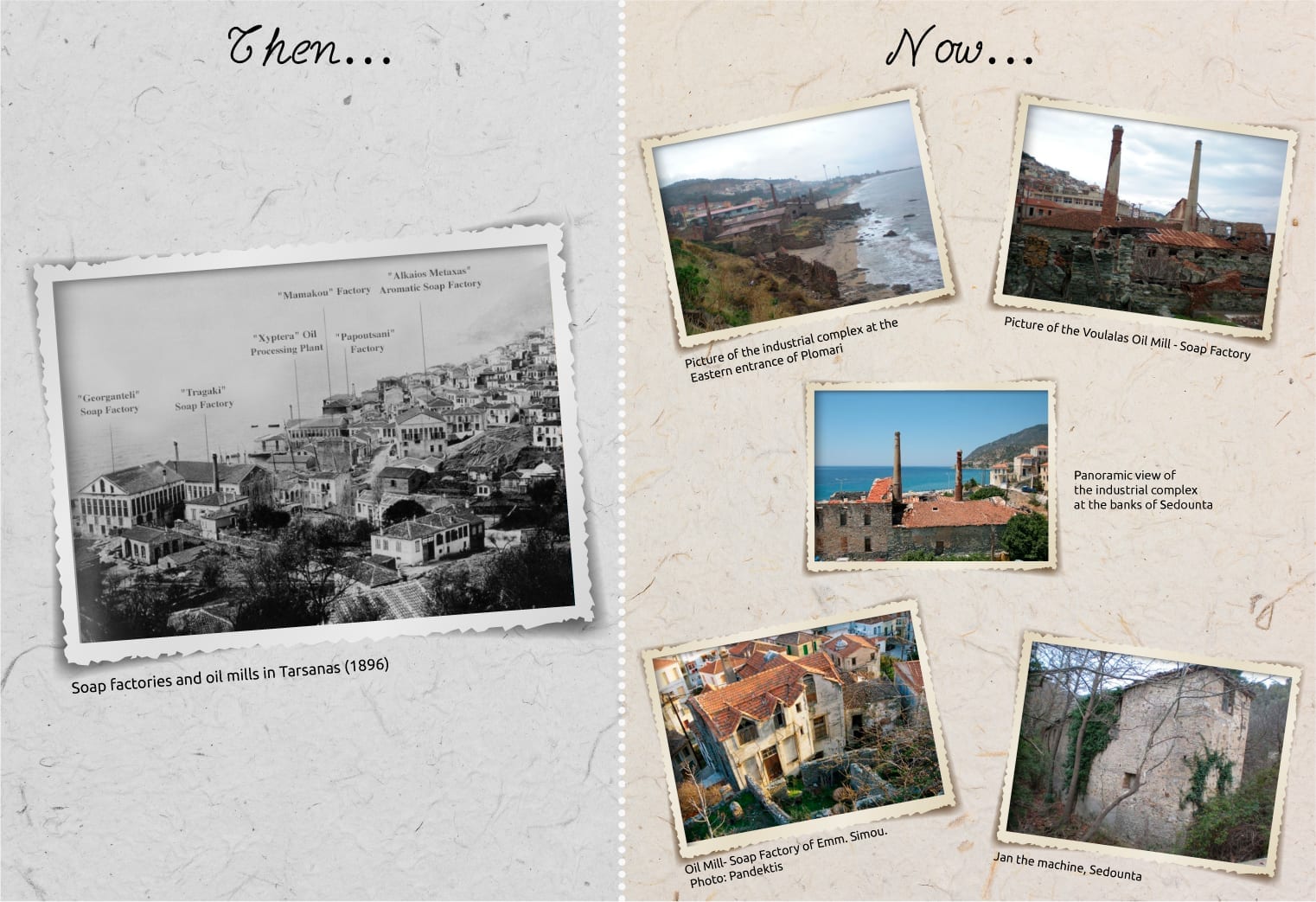The Olive Tree in Greece and Lesvos
A 5,000-years old story
The Modern Period, 19th and 20th century (Mechanization – Growth – Deconstruction)
Around the end of the 19th century, olive production in Lesvos was estimated at 25,000 tons, exports at 10,000 tons of olive oil and 3,800 tons of soap, with the number of olive trees being around 10 million, of which 2 million at the town of Plomari. In comparison, in the mid-16th century the island was producing just 236 tons of olive oil and 1,026 tons of olives, with the number of olive trees in the mid-17th century at the town of Plomari being just 17,774, corresponding to roughly 45 trees per owner.
Such growth rates were the result of the mechanization of the productive process during the last quarter of the 19th century, which constituted the starting point of the technological change and modernization that reached its peak in the 20th century. However, one can observe that, for many decades, these modern forms of production coexisted with the archaic forms of the manual cylindrical grinder and the animal-powered press of the Hellenistic period.
The mechanization period (1870-1890) did not alter the stages nor the method of the production process; rather, it kickstarted a new age by redefining the “rhythm” of production and, thus, the production quantitative outcome—especially a new reality in regard to facilities, funds, and production costs. This production framework would remain unaltered, and with minimal changes in respect to energy supply (import of diesel engines, electricity), until the end of the 1930s, when centrifugal industrial separators were integrated, thus completing the configuration of the model of the production process‘ first mechanization, which would be maintained until the end of the 1950s.
The rapid growth of Lesvos’ exports after the mid-19th century due to an increased demand for olive oil and its products, as well as the island’s transitory role—which acted as a warehouse of goods destined for the coasts of Asia Minor—contributed decisively to the development of the olive oil and soap industry. The years between 1875 and 1895 are deemed Lesvos’ golden age of soap production and trade. In 1909 at the town of Plomari alone, for example, one could find 12 soap factories, 10 olive oil mills, 1 hydraulic flour mill, 2 kernel olive oil factories, and 2 steam-powered olive oil mills.
The new economic and political conditions of the early 20th century, the instability due to the Balkan Wars and World War I—and especially the 1922 Asia Minor disaster—led to the complete cut off of traders from Asia Minor and the Black Sea. This led to a gradual deindustrialization, evident, e.g., at the town of Plomari during the 1960s, when only 3 soap factories were operative, which, along with the olive oil mill facilities, were eventually abandoned.

The factories at Plomari, then and now
The redesigning of the presses in 1960, aiming at the automation of the loading process that saved time and reduced staff numbers, brings us into the second (and decisive) stage in the post-war developments. This is a stage in which the mechanization and automation is completed with the introduction of initially three-phase (1970-1980) and later (at the end of 20th century) two-phase centrifugal presses. Due to the rapid developments and the consequences of the economic and social transformation of the post-war period, the rural population was shrunk, the mountain settlements were deserted, and the olive groves were abandoned. The olive cultivation production model, which was based on small-scale olive oil production, was deconstructed and virtually eliminated by the end of the 20th century. It was replaced by an emerging new landscape which is shaped by the demands posed by the contemporary technological applications and, above all, the challenges of global competition.
This is the new landscape in which the new generations are required to continue, by adopting a modern outlook, the history of the olive tree, already 5,000-years old in Lesvos, and 300-years old at the town of Plomari.


